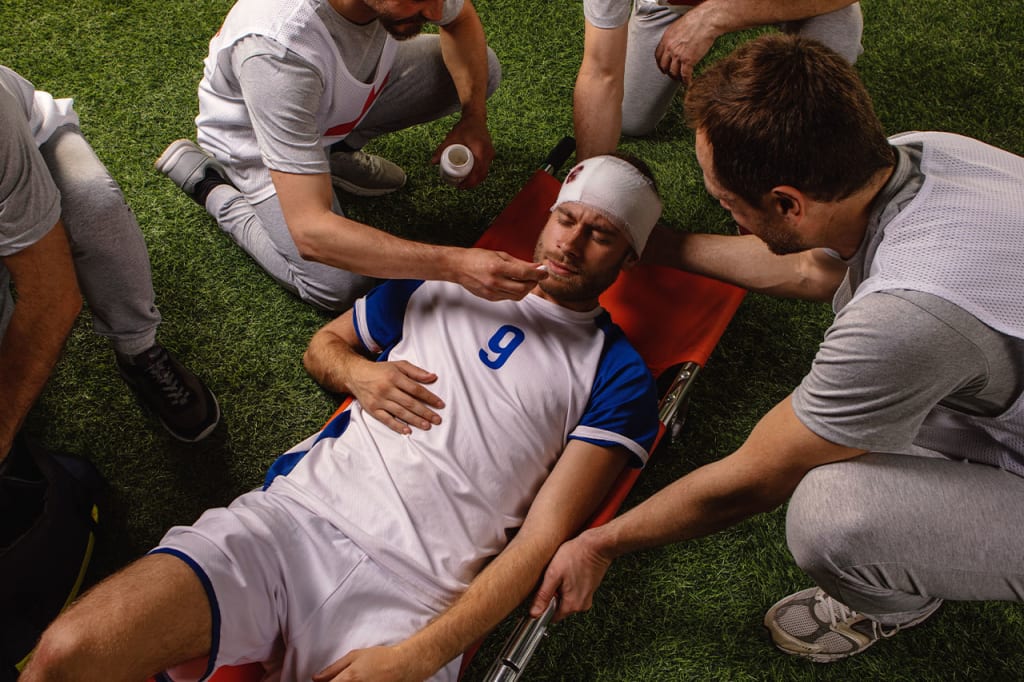How Injuries Can Lead to Addiction
Unfortunately, some people get carried away with their pain meds.

When people sustain physical injuries, they’re commonly prescribed painkillers like opioids to help them cope with the pain as their body heals. Painkillers like hydrocodone, codeine, and oxycodone are commonly prescribed to treat pain following surgery or a serious injury. However, because opioids are among the most commonly abused drugs in the world, it’s unsurprising that eventually, many people who have been prescribed these drugs for injury-related pain struggle with substance abuse. Below is more on how injuries can lead to addiction and how to recognize the signs of a developing problem.
Why Injuries Can Lead to Addiction
Substance abuse following an injury can occur in anyone, but it’s especially common among athletes. Athletes, including football, soccer, baseball, and basketball players, are often prescribed opioids to help them rapidly recover. This is especially the case for those in professional leagues, as they want to return to the field or court as quickly as possible.
Unfortunately, the desire for a rapid recovery, along with the intense desire to get rid of the pain or never feel it, often contributes to painkiller abuse and the development of addiction among the injured. Opioids are just as addictive as they are effective for treating pain, so much so that an epidemic has been ongoing since the late 1990s when there was an increase in the prescribing of these drugs. Since then, millions have been personally affected by opioid abuse, while others have lost their lives to overdose.
Injuries and abusing drugs for pain are just some of the many contributing factors to opioid addiction. When a person either gets hurt or after surgery, they’re likely going to be prescribed some form of opioid, such as oxycodone (OxyContin), hydrocodone (Vicodin), or codeine. These drugs block pain signaling from the body to the brain by attaching to mu-opioid receptors located in the central nervous system and throughout the body.
Once these receptors are blocked, the person’s pain is alleviated. What often happens to people who are taking opioids for injuries is that they’ll get nervous or upset when their body develops a tolerance to the medication they’re taking. As with many other medications, it’s common for the body to gradually get used to a certain dosage of a drug, such as an opioid.
This means that the effects of the medication may not last as long or be as effective as they were at the beginning of treatment. While this is normal in cases of opioid use for pain, many patients don’t want to feel any pain and take it upon themselves to use higher or more frequent doses than prescribed.
When this happens, they’re not only likely to become accustomed to a higher dosage for pain relief, but they’re also likely to experience a high as a result of misuse. Unfortunately, this is where pain management and substance abuse go hand-in-hand.
Not only do patients desperately want to avoid feeling any pain, but they also become attached to the euphoric side effects opioids produce in high doses. This mainly is how injuries can lead to addiction.
Chronic Pain & Addiction
Chronic pain refers to persistent pain lasting 12 weeks or longer, oftentimes occurring after an injury or procedure. Chronic pain and addiction often co-occur, as well, mainly due to the type of medications prescribed for treatment. Chronic pain can cause decreased mobility, changes in appetite, increased sensitivity to stress, mood swings, and other physical and psychological impairments.
In addition, chronic pain can occur anywhere in the body, and an injury in one particular area of the body can lead to additional issues. For example, someone with post-trauma pain (pain caused by a car accident or surgical procedure) may also experience symptoms like: ...
Visit our blog to keep reading!





Comments
There are no comments for this story
Be the first to respond and start the conversation.